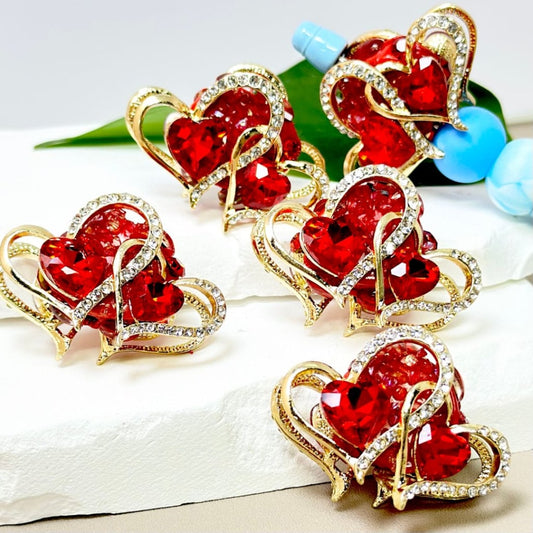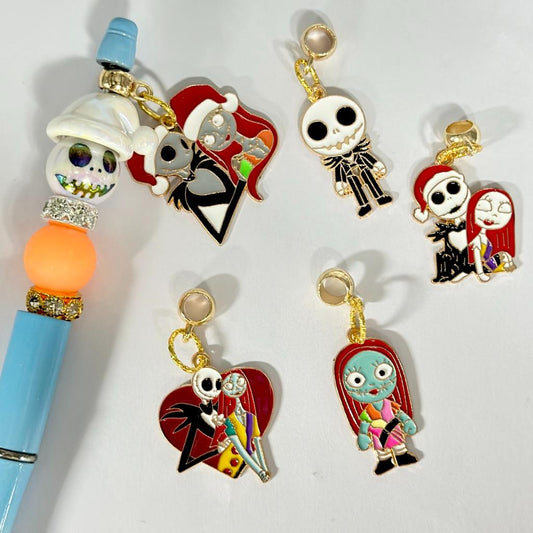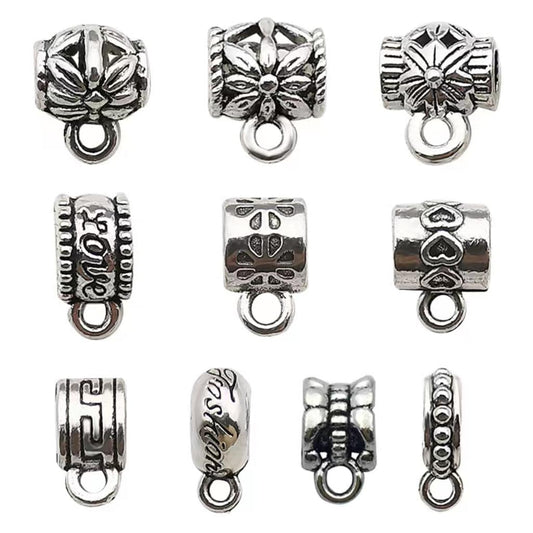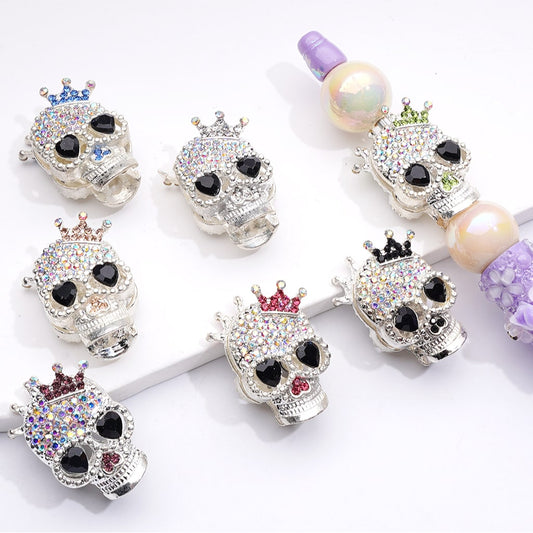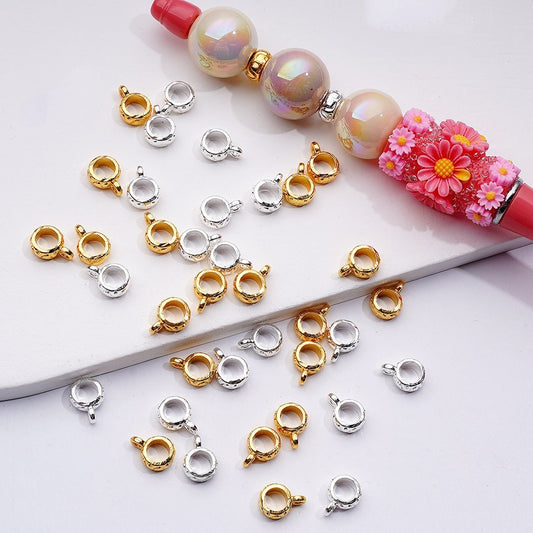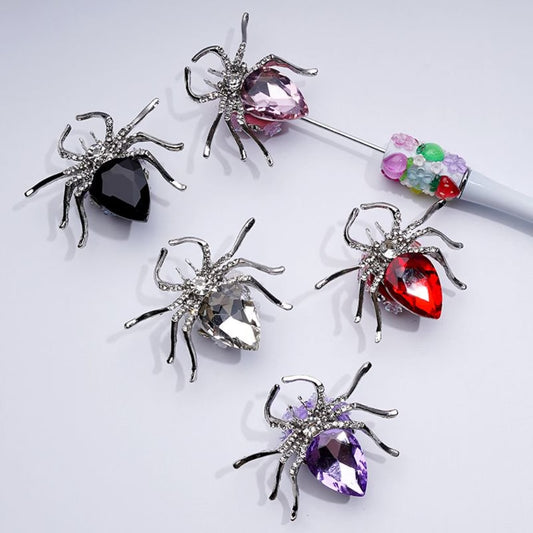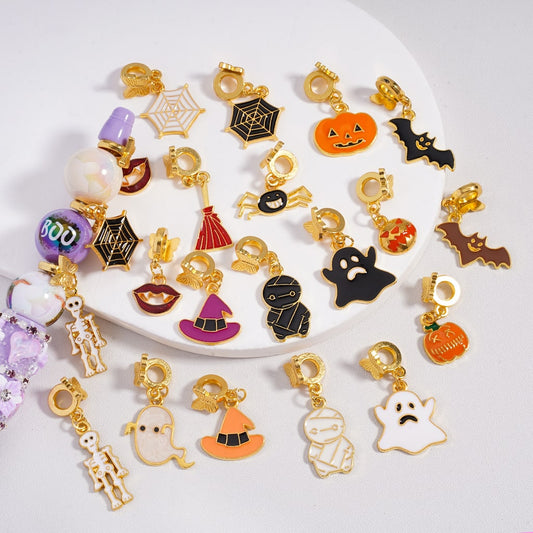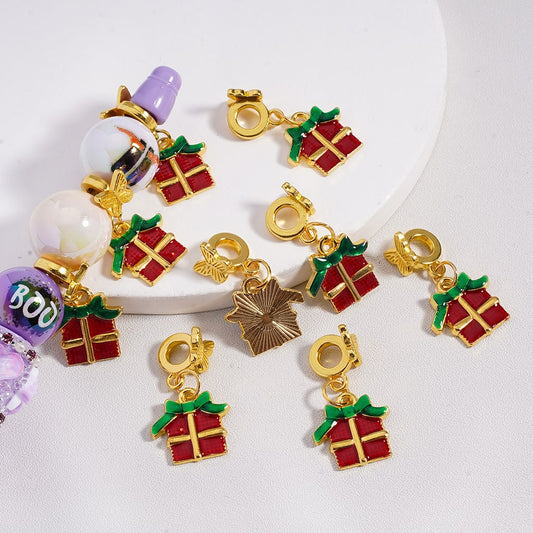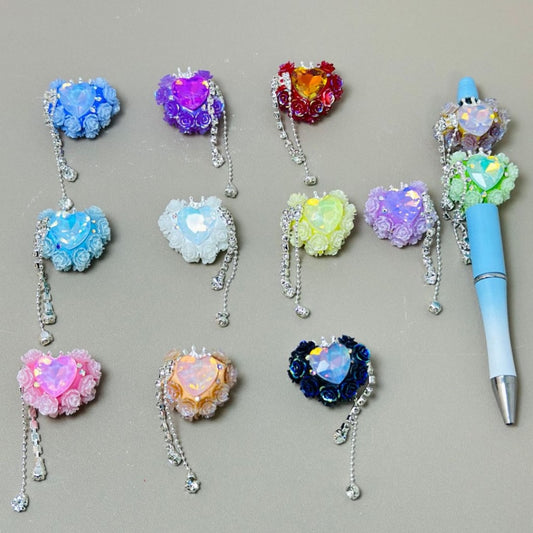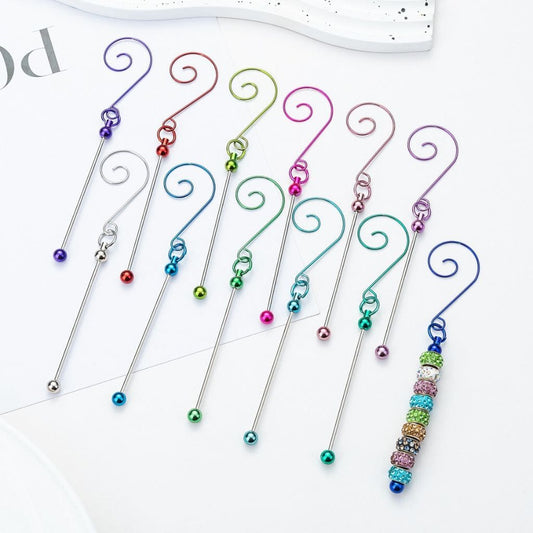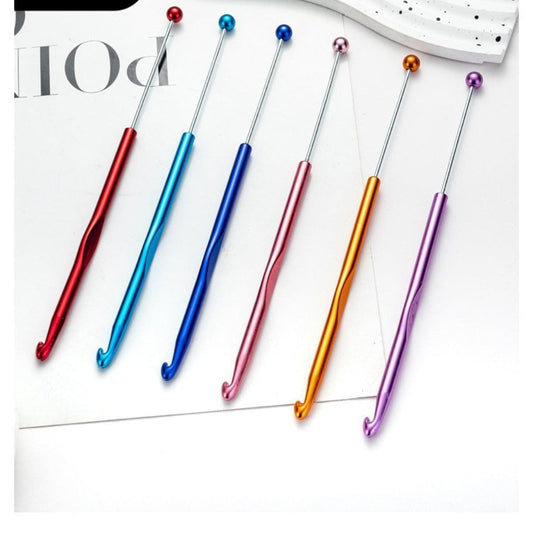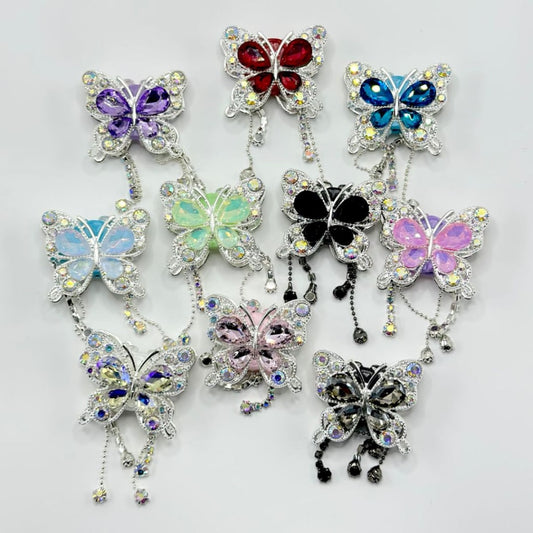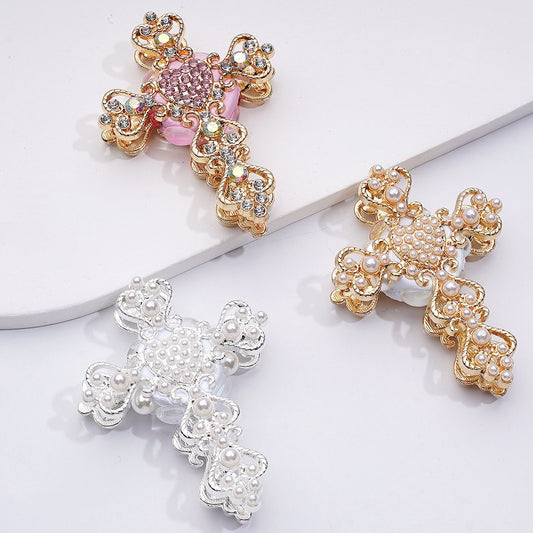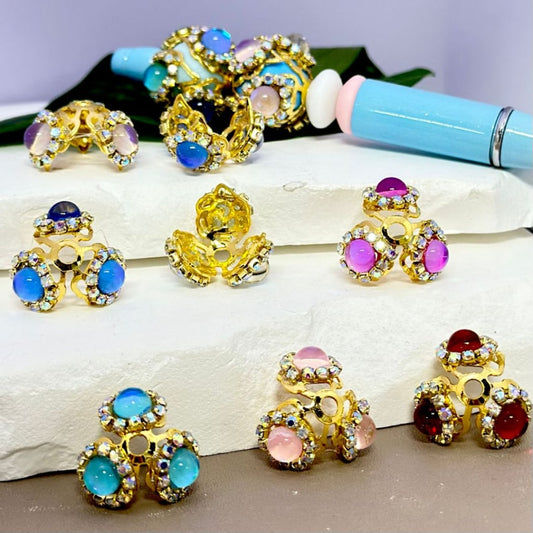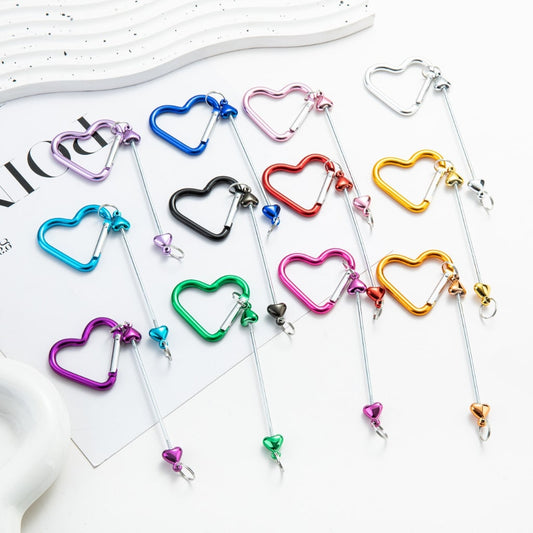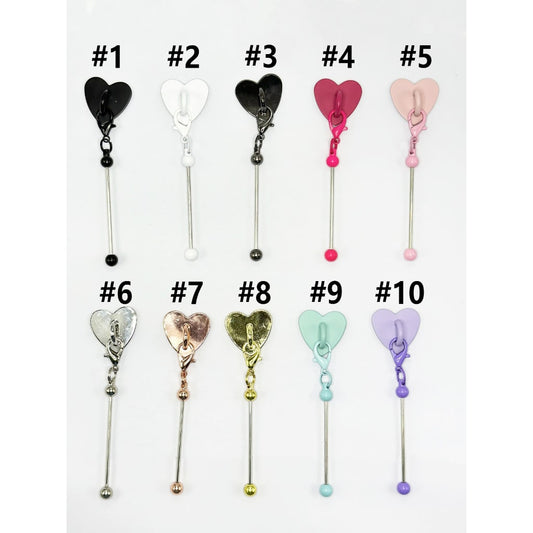-
Bling Bling Fancy Gold Alloy Heart Frame with Clear Rhinestones Red Heart Rhinestones Oval Pearls Clay Beads, Around 42*30MM
Regular price From $1.65Regular priceUnit price per -
Vivid Metal Beads with Skeleton Couple Alloy Charm Bails for Haunting Holidays
Regular price From $2.60Regular priceUnit price per -
Multi‑Tone Fashionable Beadable Bliss Necklace Pendant with Bar Available in Rose Gold, Silver & Gold
Regular price From $0.75Regular priceUnit price per -
Bail Bead Spacers in Various Designs 4mm 100 pcs
Regular price $7.00Regular priceUnit price per -
Silver Color Metal Beads with Skeleton Shadow Head with Cute Crown & AB Rhinestones, 29*19mm
Regular price From $9.00Regular priceUnit price per -
Gold & Silver Metal Bail Beads Alloy for Hanging Charms and Pendants, 7MM
Regular price From $4.00Regular priceUnit price per -
Silver Color Metal Beads with Little Cute Bee Charm Chain with Clear Rhinestone for Pen 30mm
Regular price From $3.50Regular priceUnit price per -
Gold Metal Beads Bail with Butterfly Cute Pendants Halloween Series Phantom Mask, Pumpkin, Web Hero, Bat & More Random Mix
Regular price From $1.80Regular priceUnit price per -
Bling Bling Heart Shape Clay Beads with Silver Alloy Crown Clear Rhinestones Chain AB Rhinestones Mini Flowers Heart Diamond, Around 28*23MM, Please Read the Description
Regular price From $6.00Regular priceUnit price per -
Bling Bling Fancy Gold Alloy Artwork with Shiny Rhinestones Pendants Cute Butterflies Hearts Stars Clay Beads, Around 49*83MM
Regular price From $2.10Regular priceUnit price per -
Silver Alloy Bail Beads with Butterfly, Charm Pendant with Glittery Rose Flower and Pearl, Multi-Color, Random Mix
Regular price From $1.90Regular priceUnit price per -
Mini Cute Translucent Butterfly Charms Accessories, Random Mix, Around 8*10MM
Regular price $5.00Regular priceUnit price per -
Small Silver Alloy Metal Round Beads with Carved Stripes, 6MM
Regular price From $6.00Regular priceUnit price per -
Bling Bling Butterfly Fancy Alloy Clay Beads with Rhinestones and Pendants Chains, 34MM by 40MM
Regular price From $2.00Regular priceUnit price per -
DIY Beadable Metal Heart Shape Keychain with Bar in Metallic Colors, Around 132MM
Regular price From $0.45Regular priceUnit price per -
DIY Beadable Metal Bar for Keychains in Solid Color with Carabiner Hook Metal Heart Charm, Please Read the Description
Regular price From $0.70Regular priceUnit price per
Alloy Pendants and Charms: Stylish and Versatile Jewelry
Alloy pendants and charms have become a popular jewelry choice for their combination of attractiveness, versatility, and affordability. Alloys refer to metal blends composed of two or more metallic elements, and by mixing different base metals and precious metals in varying proportions, jewelers can create customized alloys with unique colors, textures, durability and more. Two of the most common alloys utilized in pendants and charms are gold alloys and silver alloys.
Gold Alloy Pendants and Charms
Gold is a timeless metal that retains its shine and luster over many years of wear. Yet on its own, gold is generally too soft for jewelry and requires alloying with other metals to increase its hardness and durability. Some popular gold alloys pendants and charms used in pendants and charms include:
White Gold Alloys: Created by blending yellow gold with white metals like nickel, zinc or palladium to produce a silver-white finish. The nickel alloy is the most affordable, while palladium white gold is more expensive but nickel-free. White gold gives a sleek, modern twist to charms for jewelry making or a stylish pendant for jewelry making.
Rose Gold Alloys: Formed by mixing yellow gold with copper and sometimes a little bit of silver. By varying the copper percentage, jewelers can create shades from soft pink to rich rose red golds. These warm tones look stunning in charms for earrings or in elegant jewelry making charms paired with colorful beads or stones.
Vermeil Alloys: Vermeil refers to a gold plating over sterling silver. While not a true gold alloy, the gold surface brings added depth and contrast to silver pendants and charms at an accessible price point.
Tri-Color Gold Alloys: As the name suggests, tri-color gold combines yellow, rose and white gold alloys into a single, vibrant pendant and charms piece. The mix of colors creates rich visual depth, perfect for stand-out designs in jewelry making charms. The striking visual texture lends added style and sophistication.
In addition to these popular gold alloy varieties, many other specialty blends exist which mix gold with alternative metals to reduce costs or manipulate colors and finishes.
Silver Alloy Pendants and Charms
Like gold alloys, mixing pure silver with other supplementary metals creates more durable, functional silver alloys perfect for alluring pendants and charms. These are widely used in necklace making charms, bracelets, and even earring pendant designs. Common silver alloys include:
Sterling Silver Alloys: The most widely-used silver alloy, sterling silver consists of 92.5% pure silver blended with 7.5% copper or other metals. While sterling silver tarnishes over time, its affordability and ability to develop a unique patina have made it a favorite for metal pendants for jewelry making and charms for bracelet making.
Argentium Silver Alloys: Patented in the 1990s, argentium silver mixes pure silver with just 1-2% germanium and copper. The germanium increases hardness and reduces firescale/tarnish during fabrication and over time. Argentium silver retains silver’s brightness longer with minimal maintenance.
Vermeil Silver Alloys: As mentioned earlier, vermeil refers to a precious metal plating over sterling silver. While not a distinct silver alloy itself, it leverages silver’s reflectivity and elegance at a lower price tier compared to solid gold jewelry.
Nickel Silver Alloys: Despite its misleading name, nickel silver actually contains no silver at all! Rather, it is an alloy of copper, nickel and often zinc with a bright silver look. Nickel silver is very affordable, providing budget-friendly options for silver-toned pendants and charms. However, it is more prone to cause skin reactions for those with nickel sensitivities.
Just as gold and silver maintain their jewelry popularity millennium after millennium, their associated alloys will continue gracing the world’s wrists, necks, and ears as stylish, versatile charms and pendants for jewelry making. These alloy blends retain the preciousness of gold and silver while enhancing their strength and wearability—making them perfect for everyday accessories as well as treasured gifts. Whether you're using earring charms for jewelry making, crafting personalized charms to make earrings, or designing bold statement pendants, these versatile pieces offer sparkle, durability, and design flexibility.


